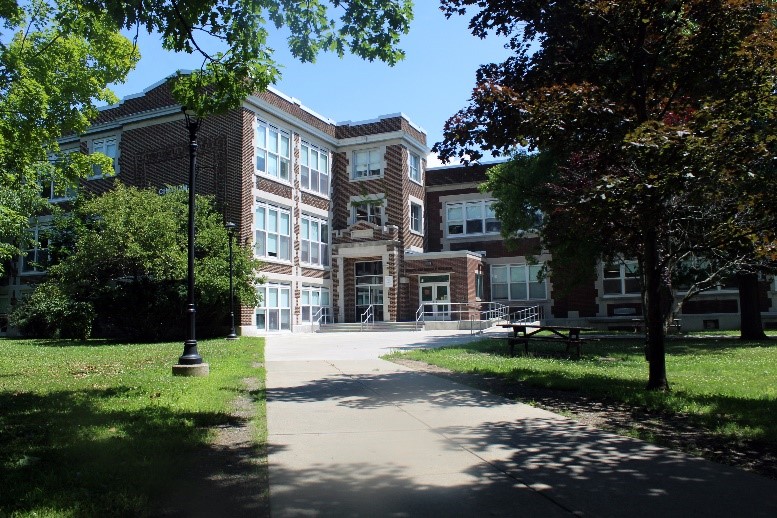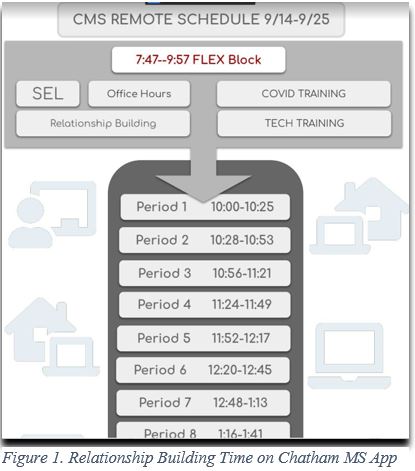“Collaboration, Teamwork, and Building Connections Matter”: Newest Case Study on Chatham Middle School Now Available
by K.C. Wilcox and Mike Burns
This blog announces another NYKids 2022 case study of the impacts of the COVID-19 pandemic on the education workforce. It highlights key take-aways from Chatham Middle School in the Chatham Central School District.

The Study
As described in previous blogs, NYKids’ research team has been analyzing data for several months and has completed case studies in our study of educators’ responses to the COVID-19 pandemic. Chatham Middle School met the criteria for inclusion in this study based on the 2020-21 survey of educators’ responses to the pandemic because it exhibited more positive workforce responses with regard to stress and job satisfaction than other schools in the sample (n=38).
Cluster analysis (i.e., the grouping of responses in clusters by similarities and comparing those to other clusters) was used to categorize teachers’ responses into three categories: high, medium and low for the variables examined. Standardized means were calculated to identify and rank schools. With a score of 42.9% compared to an overall sample mean of 36.9% and standard deviation of 15.4%, Chatham Middle School qualifies as a positive outlier in this study
Facilitators for Adaptation and Innovation: Highlights from Chatham Middle School
All about Those Teams
Chatham Middle School teachers and leaders pointed to their teams as a foundational structure for supporting collaboration and their own motivation and well-being, as well as for helping them meet their students’ needs throughout the pandemic. As one example, a teacher noted,
I think our team generates ideas outside the box. I’ve worked on a lot of teams . . . and these are all creative people. I think we think of things outside the box that can work for the student. It could be mentoring, it could be meeting with the parent, and it could be brainstorming some ideas.
Chatham Middle School’s teams were structured so that grade-level teams met frequently (at least once a week), and these meetings provided an important conduit for information flow and collaboration. Particularly important during the pandemic, team time provided opportunities for teachers with more experience utilizing technologies for remote learning to share promising practices with less experienced colleagues. One teacher explained,
We met as a . . . team and that’s kind of the main group that I was able to share a lot of my instruction with. We have two teachers who . . . had never even heard of Google Classroom or had no idea how to create one or post a video or make a video. For some of the teachers we had to catch them up on how to use technology like this. So we would meet at least once or twice a week, and that was crucial for them.
The Middle School’s teams also provided opportunity to get and give feedback to school and district leaders about a variety of issues needing attention. The guidance team, for instance, included the guidance counselor, social worker, school psychologist, school resource officer, and assistant principal, and this team was key to ensuring that school and district leaders were in the loop about what might be needed to engage particular children and families. Meeting monthly and in some cases attending grade-level team meetings, this team helped address the important issue of student attendance. As the principal reported,
We [the guidance team] would meet and look at students that we’re really concerned about. And then we either had parent meetings, virtually or on the phone, or we did some house visits . . . for some kids that were chronically absent . . . to get them here. Our SRO [school resource officer] played a role in that too.
Leveraging Relationships and Maintaining Connections
I think it takes a certain type of person to be able to teach middle school. So I think it gives us a common connection. – teacher
While the team structure in the Middle School helped maintain relationships and connections among staff, Middle School leaders and educators also expressed a consistent desire and effort to maintain relationships and connections with students and their families. Chatham, as the “hub of the community” with a history of serving multiple generations of families, benefitted from deep pre-pandemic relationships. As one teacher described, keeping these relationships was a purposeful effort and was supported through a variety of communication strategies and efforts to maintain school traditions that brought people together:
Kids’ opportunities had been blocked for two years, and we went right back to having our Queen of Hearts dance, which has been a tradition for 55 years here at Chatham. . . . Our principals made sure that happened.
Despite these relationships and efforts at making and maintaining connections, Chatham Middle School staff still confronted challenges in engaging some students and family members. Their approach was to tap staff who might have the greatest success with that effort by identifying those who had close relationships with students and families. One educator explained how the school counselor with 20+ years of experience would meet with the guidance team, and together they would identify what staff member might be best to contact a student or family member. In a discussion on how students and families were engaged, a teacher reflected,
The history of the families [mattered]. You’re like, “Oh, we had her sister 10 years ago. That’s important in a small community. We know there’s a lot of [population] turnover, but a lot of families have stayed here. So, we get the ability to say, “Oh, I remember that family; I know what works.”
 Innovation-Friendly Problem-Solving Climate
Innovation-Friendly Problem-Solving Climate
A lot of schools didn’t do art—didn’t do PE and music. We did it. We kept it. . . . [W]e found a way to do it. So kids are doing art projects online. PE was kind of tough, but the teachers worked really hard and had them journaling about exercising. – principal
The leadership team set the stage for innovative work to be done, whether it was related to instruction or social-emotional support or parent and caregiver engagement, by inviting open communications and welcoming a degree of autonomy for staff to problem solve individually and together. Scheduling of classes, for instance, required significant adjustment during the pandemic: First school needed to be shifted to entirely remote instruction quickly, followed by periods requiring hybrid scheduling (days remote and days in person) and with different configurations for in-person or remote learning for students with different needs or those having been exposed or been sick with COVID. The principal explained how he invited staff into thinking through scheduling options.
I said, “Hey, before I give a schedule to you, I want you to try to create your own schedule.” A lot of them waved the white flag, and they really didn’t realize how tough scheduling actually was. Because for every little thing you do, it does have an adverse effect on something else. I gave teachers the opportunity to give it a shot, if you fail, you fail. We try and we adapt.
Innovative problem solving was also inspired by the Middle School priority to stay connected with students on a personal level. To this end, teachers and support staff reported having the opportunity to shift some of their time with students to “relationship building” time (see Figure 1). One teacher explained what he did with the time set aside to do this:
You want to be a little social. So, let’s try to figure out ways we can create social time where you can just talk. We had office hours . . . we would do them in the morning. We had an hour delay schedule. So, first thing in the morning, every morning, all teachers, all administrators, all counseling staff, were available for kids. And that was one way for us to check in with them.
A Note from the Principal
Working with Kristen and NYKids has been rewarding, informative, and eye-opening. During the 2020-2021 school year Kristen and her team surveyed our faculty on stress and job satisfaction during the COVID pandemic. The results were positive! As the leader of Chatham Middle School this made me very happy. The past few years have been difficult for everyone and sometimes you don’t know if you are doing a good job as a leader, the results from the survey will certainly make us better. There is no perfect recipe but collaboration, teamwork, and building connections matter!
– Chatham Middle School Principal Mike Burns
To see more from this case study please check it out on the NYKids website.
Thank you for your interest in NYKids! For more updates and information about our research, follow us on Twitter, Facebook, and Instagram.
Tag:adaptation, case study, COVID, innovation, Middle school, pandemic
